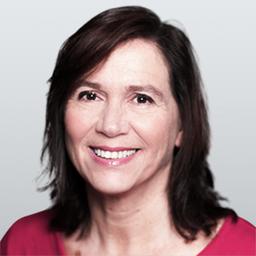In the movie “An Education,” the main character gets sidetracked from her studies by a smooth-talking art dealer who turns out to be a criminal—and married. Our protagonist learns more from that experience than from all the medieval literature books she cracked open before. I have similar feelings about my own education. While I’ve been earning my living as a writer for the past 29 years, it’s only during the COVID era that I learned what the writing business is really about.
I wear two hats in my professional life: medical writer, creating materials for doctors and the healthcare industry, and feature-article journalist for consumer magazines. It wasn’t until COVID that I began pitching essays and op-eds for publication.
The Great Divide
I quickly learned that certain news outlets were less open to my pieces than others. Salon, fuggedaboutit. Spiked Online, bull’s eye on the first try. Washington Post, not a chance. Wall Street Journal, a couple of “close, but no cigar” efforts and then finally a yes. It boiled down to this: the further left a publication leaned, the less likely it would publish my pieces (or even respond to my inquiries). I’m sure a statistician could write an equation to capture the trend.Most nerve-wracking of all were the publishers who accepted my articles but, like that first Healthy Debate editor, insisted I make substantive changes. Should I concede or push back? I did a bit of both. The most important thing, I told myself, was to make people reflect on the topsy-turvy policies that had freeze-framed the world. If I had to soften a few sentences to get the word out, so be it. I have the utmost respect for writers who refuse to yield on such matters, but 29 years of paying the bills from my writing have tipped my internal compass toward pragmatism.
I did stand my ground with an article on the mask wars. My thesis was that the endless and pointless disputes on social media—masks work, no they don’t, yes they do, no they don’t—had less to do with science than with worldview: irrespective of the data, social collectivists would find a way to defend masks, while my freedom-first compatriots would never countenance a perma-masked world.
Hidden Treasures
The process of pitching counternarrative essays, while arduous at times, led me to a smorgasbord of lesser-known, high-quality publications I never would have discovered otherwise. Topping the list was the glorious UnHerd, a UK news and opinion website with such daring thinkers as Mary Harrington and Kathleen Stock on its roster of contributors. The U.S.-based Tablet magazine offered consistently fresh takes on COVID and never took the easy road in its analyses. In its pages I found one of the most powerful COVID essays I have ever read. The author, Ann Bauer (no relation), teased out the common threads between the “settled science” about the virus and the litany of quack theories about autism, which fed into her son’s death by suicide.Then there was Quillette, whose contempt for the sacred cows of wokeism gave me a special thrill. True confession: I blew my chances with Quillette and it’s my own damned fault. Like many working writers, I sometimes pitch a piece to more than one outlet at the same time, a practice known as simultaneous submissions. This goes against protocol—we’re supposed to wait until an editor declines our pitch before approaching the next one—but the reality is that many editors never respond. With the deck thus stacked against us, we writers sometimes push the envelope, figuring the odds of getting multiple acceptances (and thus pissing off editors) are low enough to take the risk.
Podcast Polarities
Earlier this year, Brownstone Institute published my book “Blindsight Is 2020,” which critiques the pandemic response through the lens of 46 dissident thinkers. By all standards a moderate book, it stays clear of any “conspiratorial” speculations about the origins of the pandemic or the political response to it. Instead, it focuses on the philosophical and ethical issues that kept me awake at night during the peak COVID years—the same themes I explore in my essays, but in greater depth. I wrote the book not just for “my team,” but for those who vehemently opposed my views—perhaps especially for them. I didn’t expect to change their minds as much as to help them understand why some of us objected so strenuously to the policies they cheered on.After the book came out, a few podcasters invited me to their shows. I appeared on a Libertarian Institute podcast in which the host puffed on his hand-rolled cigarettes while we talked. I spoke to an amiable ex-con podcaster who made it his mission to share Ayn Rand’s ideas with the world. I bonded with Rupa Subramanya—a brilliant Canadian conservative journalist and podcaster featured in my book—over the Freedom Convoy we had both supported.
All told I’ve appeared on 22 podcasts to date, each of them hosted by a right-leaning or libertarian host. Crickets from the left. Not one to accept defeat, I’ve begun reaching out to left-leaning podcasters on my own. Perhaps one day I’ll hear back from them.
COVID media, like so much else in modern life, has become hopelessly fractured: the tall, left-facing trees dominate the landscape, telling the story of a deadly virus that we “did the best we could” to manage. Below the tree canopy lies the tangle of weeds that sway in the wind, whispering songs of freedom and warning against the totalitarian impulses that all too readily emerge during crises. While I’ll continue to throw my essays at those unyielding trees, the messy underbrush is where I’ve found my journalistic home.




